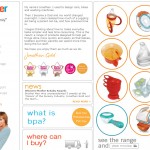Persuasion has been researched thoroughly. Mr. Cialdini is undoubtedly the biggest authority on the field. His books are bestsellers and have been on the “must-read” list for marketers and copywriters for years.
In his research, Cialdini came up with six scientific principles of persuasion that will help guide you to become more effective at getting people to do what you want. In case you’re not familiar with those principles, then here’s the summary:
Principle 1: Reciprocity
People feel obligated to give back to others who have given to them.
How to use it: teach your prospect something useful in your copy, give away free stuff, and better yet—add value to your prospects long before you even start to sell them something.
Principle 2: Liking
We prefer to say “yes” to those we know and like.
How to use it: talk/write like a human, connect with the reader, share details about yourself. Blog. Be friendly and cool (like Richard Branson, Oprah, Gary V).
Principle 3: Social Proof
People decide what’s appropriate for them to do in a situation by examining and following what others are doing.
How to use it: show how many others are already using your product. Show off your numbers. Use testimonials. Link to 3rd-party articles.
Principle 4: Authority
People rely on those with superior knowledge or perspective for guidance on how to respond AND what decisions to make.
How to use it: Demonstrate your expertise. Show off your resume and results. Get celebrity (in your niche) endorsements.
Principle 5: Consistency
Once we make a choice/take a stand, we will encounter personal and interpersonal pressure to behave consistently with that commitment.
How to use it: Start small and move up from there. Sell something small at first (a no-brainer deal), even if you make no money on it. They now see themselves as your customer, and will most likely return to make a larger purchase.
Principle 6: Scarcity
Opportunities appear more valuable when they are less available.
How to use it: Use time or quantity limited bonuses. Limit access to your product. Promote exclusivity.





